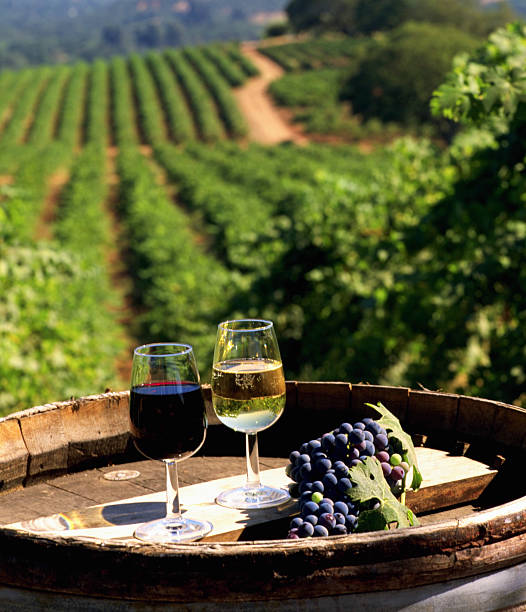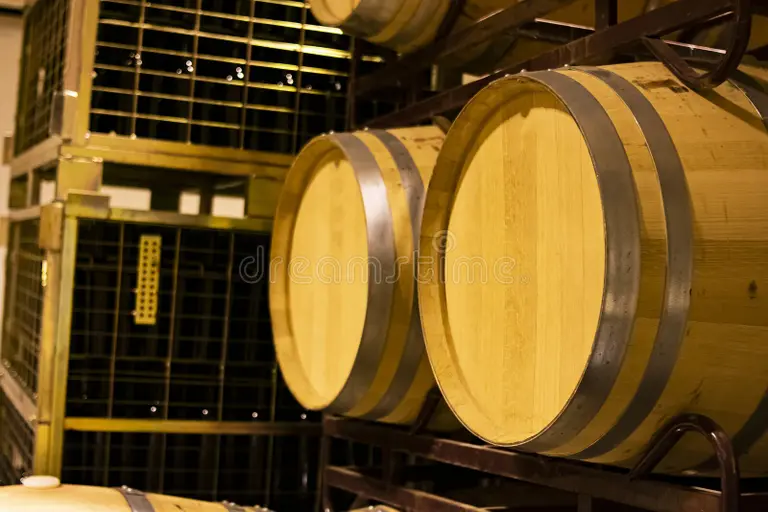The Allure of Old Vine Zinfandel Wine
Unearthing a Hidden Gem in the Wine World

Old Vine Zinfandel wine, oh how it captivates the senses and takes us on an extraordinary journey through time. It’s not just a beverage; it’s an experience that stimulates both the palate and the mind. This enigmatic elixir possesses a deep-rooted allure that sets it apart from other wines.
The very mention of its name awakens curiosity and ignites passion within wine enthusiasts worldwide. But what makes Old Vine Zinfandel so alluring?
Let me unravel this captivating mystery for you. When you take your first sip of Old Vine Zinfandel, you’re instantly transported to a different realm, where flavors intertwine harmoniously, unveiling layers of complexity that mere mortals could only dream of.
Its luscious fruit-forward profile dances on your taste buds, delighting them with notes of ripe blackberries, cherries, and plums. Yet, beneath this fruity façade lies an underlying depth – subtle hints of spice, vanilla, and even a touch of black pepper emerge as the wine caresses your palate.
What truly sets Old Vine Zinfandel apart is its ability to age gracefully. These vines have weathered countless seasons and have grown wise with time – much like a seasoned sage imparting wisdom through their wines’ flavors.
The intensity and concentration achieved by these gnarly old vines produce wines that possess an incredible structure and mouthfeel. They are bold yet balanced; robust yet elegant.
Unveiling the Secrets Behind Its Creation
The artistry behind crafting Old Vine Zinfandel is something to behold – it’s where science intertwines with devotion to yield liquid poetry in every bottle. To unlock its secrets is to understand the sacred bond between land and grape. The journey begins in the vineyards, where ancient vines, some even over a century old, proudly stand as testaments to time’s passage.
These resilient beings dig their roots deep into the earth, drawing sustenance from soils that have been carefully tended and nurtured. It is here, in vineyards blessed with optimal growing conditions and skilled viticultural practices, that the stage is set for greatness.
When the time is right, skilled hands descend upon the vineyards to handpick each precious cluster of Zinfandel grapes. This meticulous process ensures that only the ripest and healthiest fruits are chosen – ensuring an impeccable foundation for crafting exceptional wine.
The selection of grapes at their peak ripeness allows winemakers to harness maximum flavor potential and showcase the true essence of Zinfandel. Once harvested, these prized grapes embark on a transformational journey within the winery’s walls.
Gentle crushing techniques are employed to preserve both grape quality and integrity. Some hold steadfastly to tradition by utilizing whole cluster fermentation methods – where clusters are left intact during fermentation – while others strike a harmonious balance between innovation and tradition by employing modern destemming machines that remove stems before fermentation commences.
The secrets behind Old Vine Zinfandel’s creation do not stop there – it extends to yeast selection and temperature-controlled fermentation. Indigenous yeasts play a crucial role in capturing the essence of terroir—the unique flavors imparted by soil, climate, and vineyard location—allowing these wines to express their sense of place.
Temperature control during fermentation ensures optimal extraction of flavors while maintaining balance. Old Vine Zinfandel stands tall as an enigmatic force within the wine world – an elixir that seduces our senses with its complex flavors and whispers tales of ancient wisdom through every sip.
Its allure lies not only in its ability to transport us back in time but also in its intricate creation process. This noble wine demands our respect, gratitude, and a glass continuously filled to celebrate the beauty that is Old Vine Zinfandel.
Unearthing the Roots: The Vineyards
The Significance of Old Vines in Winemaking
Old vines, those wise and weathered guardians of the vineyard, possess an unparalleled allure in the world of winemaking. These venerable plants, with their gnarled trunks and twisted branches, have stood the test of time and offer a glimpse into the rich history of viticulture.
They possess a depth of character that is impossible to replicate through young vines alone. In their resilient roots lies a connection to generations past, imparting wisdom and flavor upon every glass poured.
Exploring the Definition of “Old Vine”
Now, let us delve into the very essence of what makes a vine “old.” There is no set age requirement for a vine to be deemed old; rather, it is a subjective determination based on its ability to produce grapes with distinctive qualities. Some argue that vines must reach at least 50 years old to earn such esteemed status, while others assert that true greatness can only be achieved by vines aged 100 years or more. Regardless of specific age thresholds, what truly matters is the depth and complexity that these ancient beings bring forth in each grape cluster.
Understanding the Unique Characteristics They Impart to Zinfandel Grapes
Ah! Zinfandel grapes—the epitome of excellence in winemaking.
When nurtured by old vines, this noble varietal reaches new heights of flavor complexity and intensity. These well-seasoned vines yield lower quantities but unmatched quality.
The resulting Zinfandel grapes possess deeper color saturation with concentrated flavors ranging from juicy blackberries and raspberries to complex notes reminiscent of tobacco and spice. It is through this harmonious marriage between ancient vines and luscious fruit that Old Vine Zinfandel wines earn their place on every connoisseur’s shelf.
Nurturing Ancient Vines for Optimal Grape Quality
To cultivate the finest Zinfandel grapes, meticulous care must be lavished upon these ancient vines. Soil composition plays a vital role, with well-draining soils like loam and sandy loam providing ideal conditions for root development. Vineyard location is equally paramount, with sun-drenched hillsides and moderate temperatures coaxing the vines to thrive.
Pruning techniques are the secret dance between artistry and science, ensuring vine health and longevity. By carefully thinning out excess growth and shaping the canopy, winemakers guarantee proper airflow and sunlight exposure, allowing each grape to reach its full potential.
Old vines are not merely relics of the past; they are living treasures that infuse Zinfandel grapes with unmatched depth and character. Their gnarled appearance belies an extraordinary capacity to produce wines that encapsulate history in every sip.
The significance of old vines in winemaking lies not only in their age but also in their ability to nurture optimal grape quality through soil composition considerations and careful pruning techniques. These vineyard guardians deserve our utmost respect as they continue to bestow their wisdom upon each generation of winemakers lucky enough to tend them.
Harvesting Time: Picking the Perfect Grapes
Gauging grape ripeness for ideal wine flavors: When it comes to crafting a spectacular Old Vine Zinfandel, one must never underestimate the importance of gauging grape ripeness. This task requires meticulous attention to detail and a keen understanding of the desired wine flavors.
A trusty tool in the winemaker’s arsenal is the refractometer, an instrument that measures sugar levels in grapes. Each variety has its own sweet spot, and by monitoring sugar content, we can ensure that our Zinfandel grapes are picked at their peak ripeness, resulting in luscious and well-balanced wines.
Assessing acidity and pH levels for balance: While sugar levels contribute to sweetness, acidity plays a crucial role in balancing the overall profile of our beloved Old Vine Zinfandel. To achieve that perfect zing, winemakers must conduct regular checks on acidity and pH levels throughout harvest time.
By using titration or pH meters, we can ensure that our grapes possess the ideal balance between vibrant acidity and natural sweetness. This delicate equilibrium guarantees a wine with nuanced flavors that dance on your palate.
Handpicking vs Mechanical harvesting: The debate continues: Ah, the age-old battle between tradition and efficiency! Handpicking grapes harkens back to centuries of winemaking heritage.
It allows us to preserve grape integrity as skilled hands carefully select only the ripest clusters while leaving unripe or damaged ones behind. However, some argue that mechanical harvesting offers higher efficiency and cost-effectiveness without compromising quality.
But let me tell you this – there’s no substitute for human touch! Handpicking ensures every single grape is treated with utmost care and selection precision.
Plus, there’s something poetic about those vineyard workers laboring under the sun, their connection to the land palpable in every bunch they gather. It’s a tradition we must cherish and uphold.
IV: From Grape to Must: Crushing and Fermentation
Gentle crushing techniques for preserving grape quality: In order to preserve the exceptional quality of our Zinfandel grapes, we employ gentle crushing techniques that minimize the risk of unwanted bitterness. One method that embraces tradition is whole cluster fermentation, where whole grape clusters are introduced into the fermentation vessel.
This technique allows for a slower and more delicate extraction of flavors and tannins. On the other hand, modern winemakers have embraced destemming machines that carefully separate berries from their stems while retaining integrity.
This practice strikes a balance between innovation and tradition, ensuring optimal extraction without compromising grape quality. Yeast selection and fermentation temperature control: To create a wine that truly encompasses the essence of its terroir, yeast selection plays an integral role.
Indigenous yeast strains naturally present on grape skins contribute unique aromas and flavors that reflect the specific vineyard location. By allowing these indigenous yeasts to work their magic during fermentation, we can capture the truest expression of our Old Vine Zinfandel grapes.
Additionally, temperature-controlled fermentation is key in maximizing flavor extraction from the grapes while maintaining consistency throughout production batches. Precise temperature control not only prevents off-flavors but also enhances color stability and smoothness on your palate.
V: Aging Gracefully in Oak Barrels
Choosing the right oak barrels for aging: When it comes to aging our cherished Old Vine Zinfandel wines, selecting appropriate oak barrels is tantamount to unlocking their full potential. The choice between American oak or French oak is subjective but crucial nonetheless as they impart distinct characteristics to the wine.

American oak offers bold flavors of vanilla, coconut, and dill, while French oak lends delicate notes of spice and elegance. This decision ultimately comes down to personal taste and the desired flavor profile.
Additionally, considering the toasting levels of the barrels is vital. Light toasting preserves fruitiness and freshness, medium toasting adds complexity, while heavy toasting brings forth smoky and toasted nuances.
Conclusion: As we delve into the intricate process of crafting Old Vine Zinfandel wine, we discover a world brimming with meticulous care. From handpicking grapes with unwavering devotion to leveraging gentle crushing techniques that preserve grape quality, every step embarks upon a journey toward vinous perfection.
The artistry lies not only in gauging ripeness but also in balancing acidity and pH levels for harmonious wines that leave a lasting impression on our palates. With yeast selection capturing terroir essence and temperature-controlled fermentation maximizing flavor extraction, we witness winemaking at its finest.
As our beloved Zinfandels age gracefully in carefully chosen oak barrels, they transform into eloquent storytellers of time and terroir. So raise your glass high and savor the fruit of this laborious craftsmanship – an exquisite Old Vine Zinfandel wine worth cherishing.